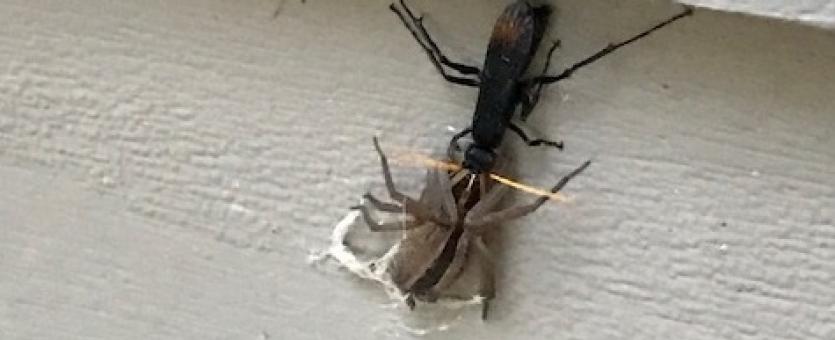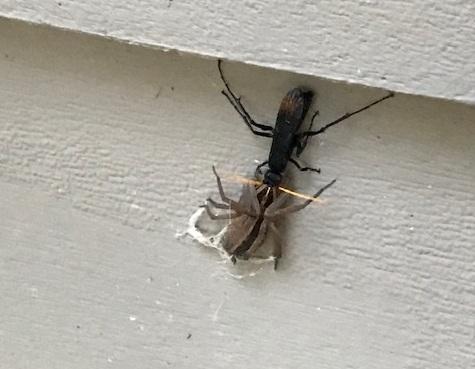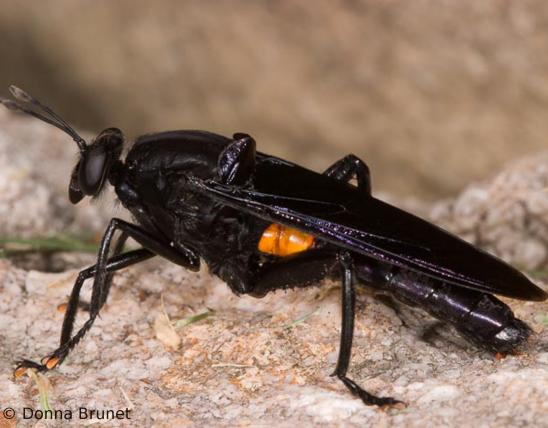
Spider wasps in genus Entypus are quite large, sometimes reaching nearly 1¼ inches in length (not counting appendages). They are black insects with a bluish sheen. They usually with some amount of amber coloring on their dark, smoky wings. The legs are very long and spined.
Entypus spider wasps typically hunt wolf spiders to provide food for their larvae. They make their nests in cavities that were created previously by some other animal. They are usually only seen in late summer or early fall. They are pretty spectacular when they are hauling a big wolf spider to its doom. They are also often seen at flowers as they drink nectar to fuel their activities.
These spider wasps don't have common names.
There are seven Entypus species recorded for North America north of Mexico. Here are the three most common:
- E. aratus has wings that are all amber, except with dark tips.
- E. fulvicornis has black or dark brown wings and bright yellow antennae.
- E. unifasciatus has yellow antennae and usually has a single diffuse amber band or patch near the tip of the dark, smoky wings.
Learn more about these and other spider wasps on their group page.




























